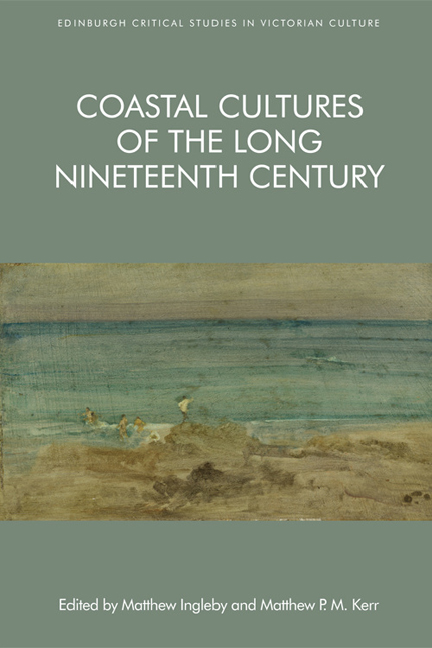1 - ‘Unconscious of her own double appearance’: Fanny Burney’s Brighton
Published online by Cambridge University Press: 01 May 2021
Summary
To think about Fanny Burney's coastal imagination involves a radical shift in geography for an author better known for her portrayals of Georgian London, especially in her first two novels, Evelina (1778) and Cecilia (1782). In her fourth and final novel, The Wanderer (1814), a post-Revolutionary narrative set in the 1790s but published in the same year as Austen's Mansfield Park and Scott's Waverley, Burney leaves the metropolis further behind to develop a more complex geographical network that takes her heroine essentially to the edge, to the coasts of France and England and, more specifically, to Brighthelmstone, now better known as Brighton, where much of the plot, over two thirds of the novel, unfolds. The Wanderer opens on to the French coast and reaches its denouement on a beach in southwest England. The novel's progression also closely connected it to the sea and shore: recalling the decade of her incarceration with her husband in France between 1802 and 1812 in the novel's dedication, Burney described how these early pages had ‘already twice traversed the ocean in manuscript’. Wary of ‘venturing upon the stormy sea of politics’, she recounts, diplomatically, how the custom-houses on ‘either – alas! – hostile shore’ had accepted her assurances that her writings contained no seditious material and allowed her papers through. This double bond between novel and coastline – the manuscript as a physical seafaring object and a story set predominantly in the seaside resort of Brighton – suggests a strong link between author, sea and shore. Yet Burney's relationship with Brighton was more complex than these associations suggest. Her regard for, and experience of, Brighthelmstone shifted and changed over a number of years, offering a varying perspective that, I argue, is mirrored in her writings about the coast, where sea and view are successively concealed and revealed, through a range of rhetorical and affective registers, different literary traditions, and alternating prospects of restriction and boundlessness.
Burney's private letters, stretching from youth through to old age, record a long personal connection with Brighton. Written over a number of decades, alongside her fiction, they reveal a portrait of the resort that both reflects and runs counter to the more conventional and popular history of the development of the town in this period.
- Type
- Chapter
- Information
- Coastal Cultures of the Long Nineteenth Century , pp. 29 - 50Publisher: Edinburgh University PressPrint publication year: 2018



